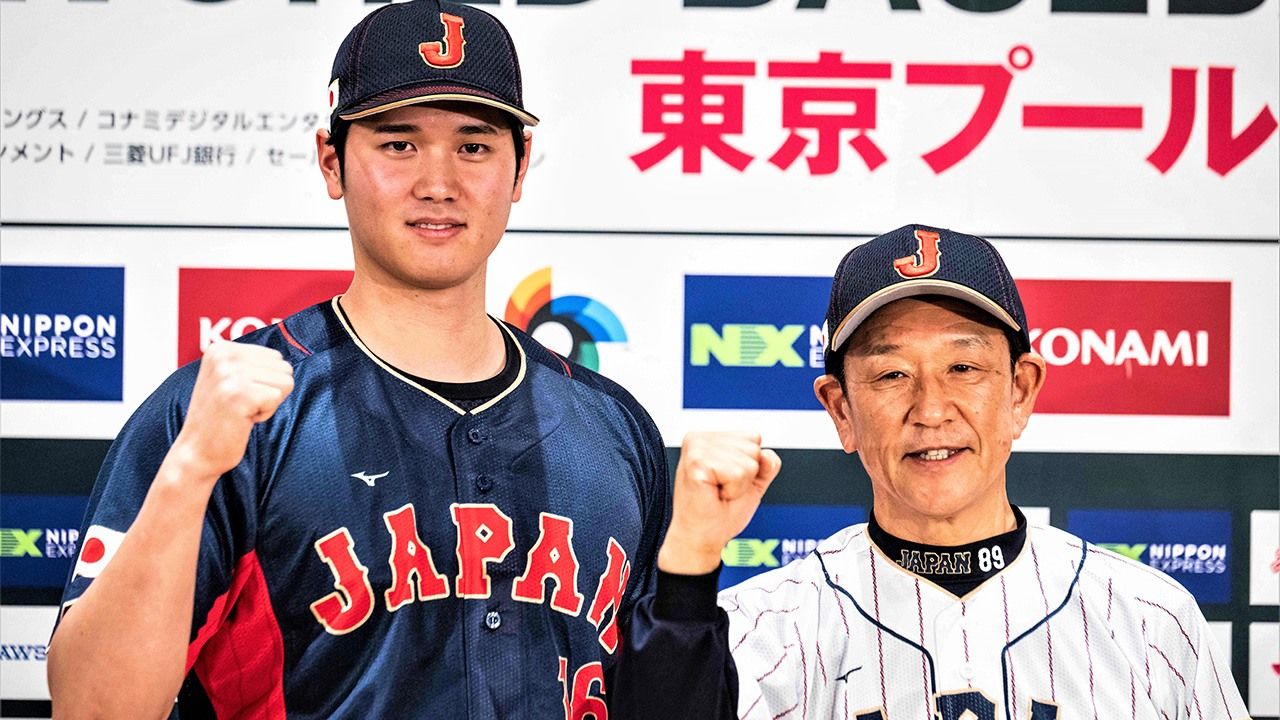
Japanese Dream Team Sets Sights on Victory
Sports- English
- 日本語
- 简体字
- 繁體字
- Français
- Español
- العربية
- Русский
The Samurai Japan Dream Team
Japan’s national baseball team Samurai Japan has at last become the “dream team” that baseball fans have always wanted. Ever since the 2004 Olympics in Athens, where Japan put forward a team led by national treasure and former Giants manager Nagashima Shigeo, the Japanese team has consisted exclusively of professional players. Initially, however, restrictions on the invitation of players meant that Samurai Japan contained not a single major league player. While the team that contested the inaugural WBC in 2006 was the first to include major-league players, Matsui Hideki (New York Yankees), who, along with Suzuki Ichirō (Seattle Mariners), was supposed to be one of the team’s main attractions, ended up pulling out. This phenomenon was repeated in later tournaments, with the result that a true “dream team” never contested the WBC.
The team for the upcoming WBC, however, includes major-league pitchers Ohtani Shōhei (Los Angeles Angels) and Darvish Yū (San Diego Padres), as well as major-league fielder Yoshida Masataka (Boston Red Sox). It is truly the “dream team” that Japanese fans have long awaited.
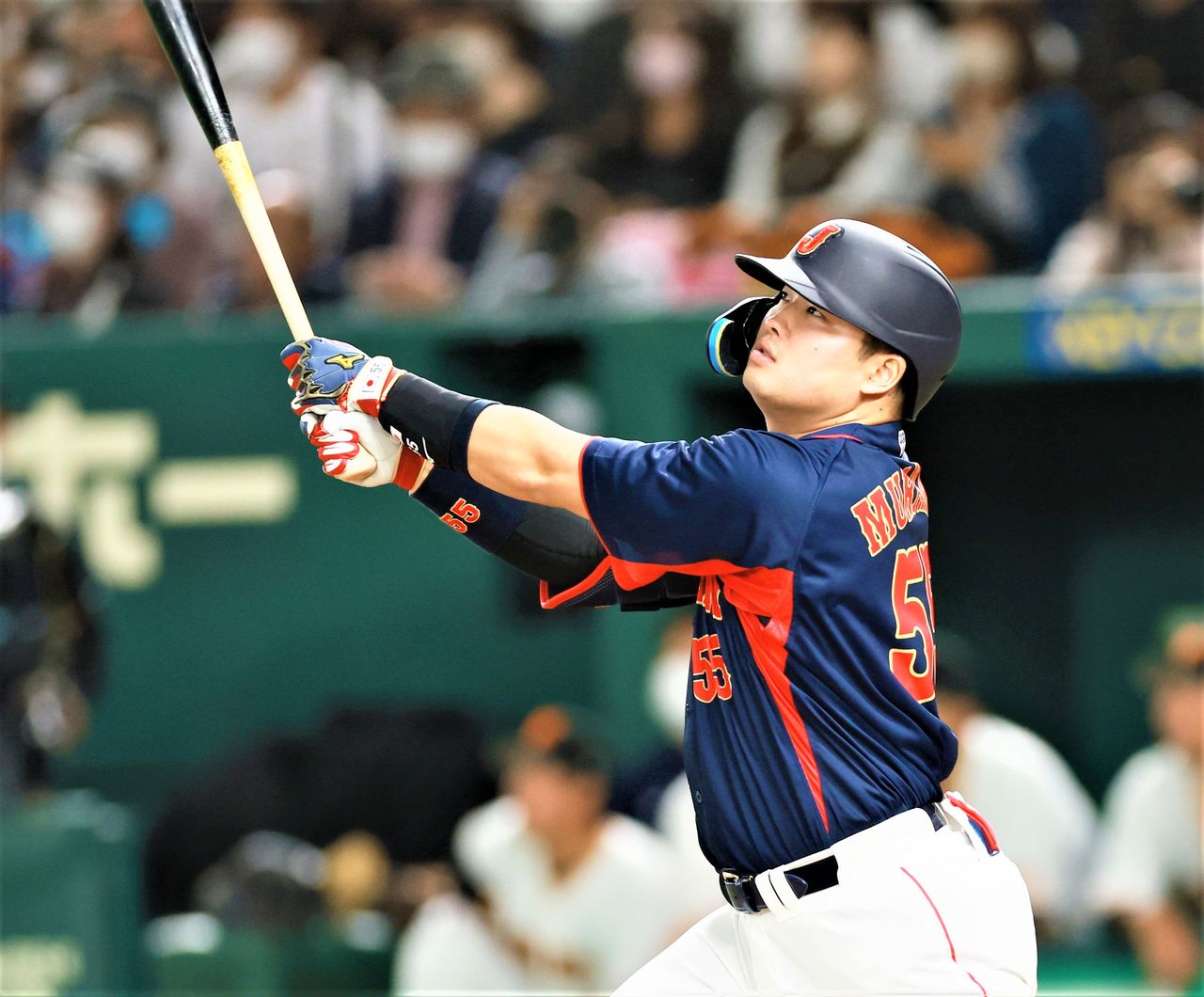
Murakami Munetaka (Tokyo Yakult Swallows), who in 2022 became the youngest triple crown winner, hits a home run in a friendly match against the Yomiuri Giants at Tokyo Dome on November 6, 2022. (© Jiji)
In fact, it was a remark by Ohtani that sparked the dream team’s formation.
“Just getting to see a team of Japan’s top players going against the top baseballers from overseas was really exciting. As I played baseball during my school days, I think that was the most exciting time for me. That’s what I think of when I think of the WBC.”
Ohtani described his memories of the Japanese national team playing at the first and second tournaments in 2006 and 2009. A baseball-crazy kid at the time, he says he remembers watching Japan play South Korea on TV in the second Classic, and his excitement at seeing Ichirō’s legendary walk-off home bat in the winning run and the Japanese team’s consecutive victories.
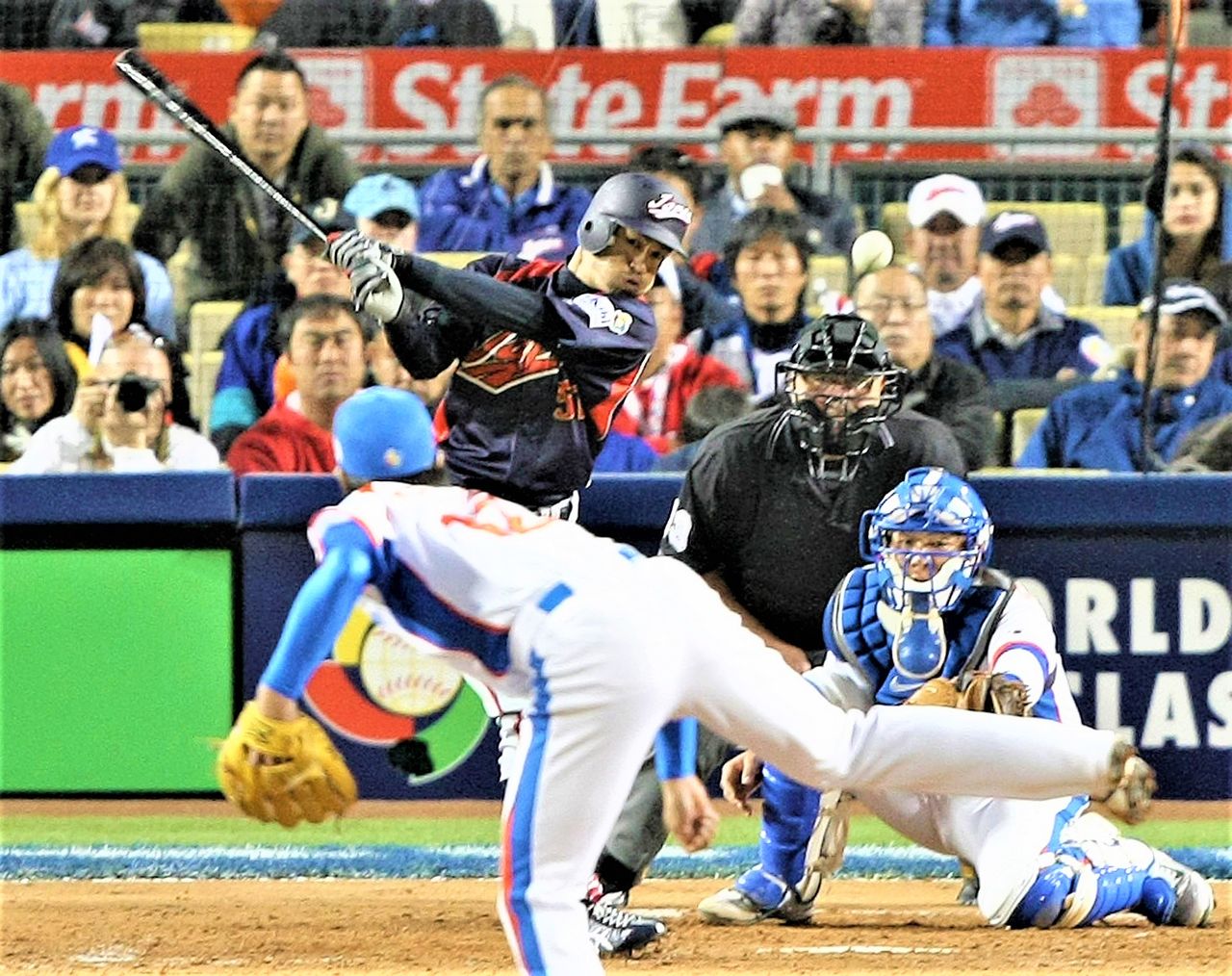
Japan playing South Korea at 2009 WBC finals. Ichirō had been off form earlier in the tournament but changed everything with this decisive hit in extra innings on March 23, 2009, in Los Angeles. (© Jiji)
Many Samurai Japan players share this sentiment. They grew up wanting to be like WBC competitors Ichirō and Matsuzaka Daisuke.
Of course, with subsequent tournaments, the WBC itself matured, and that made major league players more willing to take part. However, at the root of the players’ decision to join Samurai Japan was the aspiration they felt toward the team as children. It was the result of a desire to return to what Ohtani describes as the “best time to play baseball,” and to seek the excitement that comes with throwing oneself into competition.
This is a feeling and privilege that may be unique to those who grew up in Japan, the country that won the first and second WBCs. However, it is also the reason that the players joined the team at the invitation of manager Kuriyama Hideki and are so committed to winning.
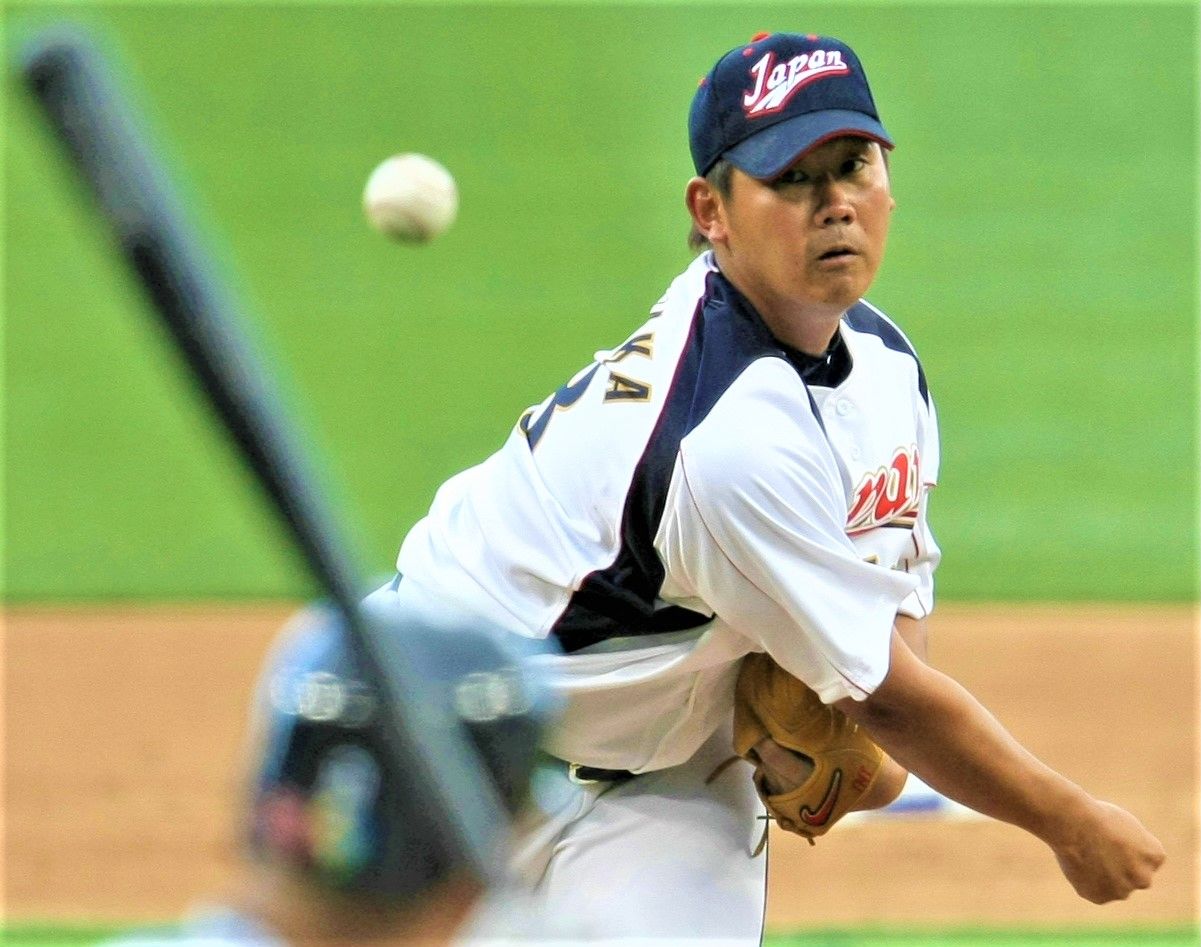
Tournament MVP Matsuzaka Daisuke pitches in a game against the United States in the second WBC on March 22, 2009, in Los Angeles. (© Jiji)
Pitch Count Rules Influence Pitcher Selection
When asked what he aimed to achieve at the Classic, Kuriyama emphasizes, “We just want to be the best in the world,” noting that the team’s concept revolved around pitcher-centric, defensive baseball.
“Our basic approach is to win by concentrating on pitchers and mounting a strong defense. When making my picks, I was still deciding at the last moment how many pitchers to have on the team, and ultimately decided to start with one additional player to make a team of 15,” says Kuriyama.
If Samurai Japan team makes it through to the final, it will play a total of seven games and need four starting pitchers, likely to be Ohtani, Darvish, Yamamoto Yoshinobu (Orix Buffaloes), and Sasaki Rōki (Chiba Lotte Marines). However, pitchers are limited to 65 pitches in the first round, 80 in the second round, and 95 in the championship round, so it is likely that the starting pitchers will be replaced after three or four innings, meaning that four additional pitchers will be required. These are likely to be Imanaga Shōta (Yokohama DeNA Baystars), Togō Shōsei (Yomiuri Giants), Miyagi Hiroya (Orix Buffaloes), and Takahashi Keiji (Tokyo Yakult Swallows). If Ohtani relieves other players, Imanaga will become the starting pitcher, with the youngest member of the team, Takahashi Hiroto (Chūnichi Dragons), set to follow him on the mound.
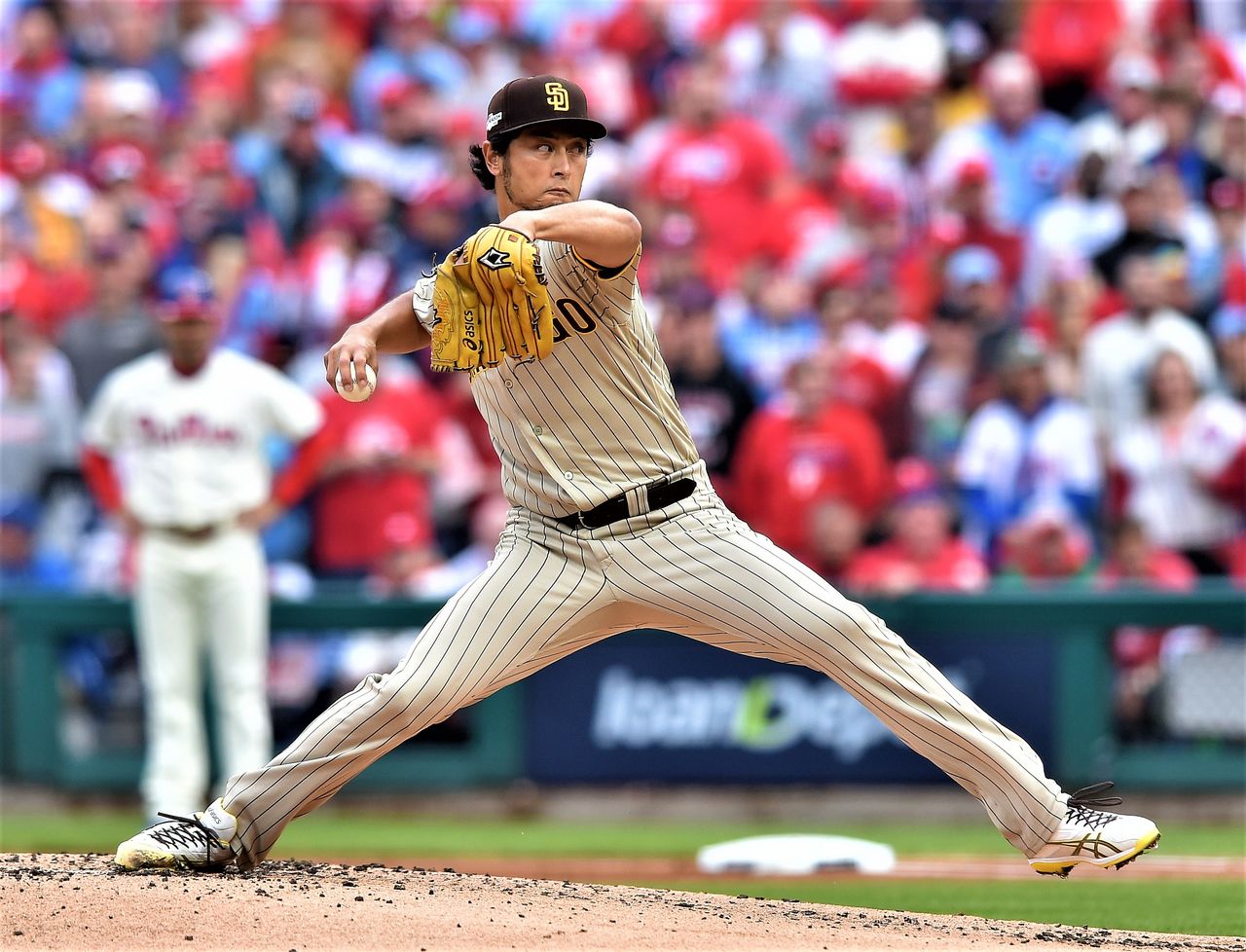
The upcoming WBC will be Darvish Yū’s second. Darvish, here pitching in Philadelphia on October 23, 2022, delivered 16 wins for the San Diego Padres in 2022. (© AFP/Jiji)
Meanwhile, relief pitchers are not allowed to pitch again for one day after throwing 30 pitches (four days after throwing 50), or to pitch on more than two days in a row. For this reason, it was necessary to appoint at least two closers. Kuriyama chose Tokyo 2020 star Kuribayashi Ryōji (Hiroshima Carp), Ōta Taisei (Yomiuri Giants), and Matsui Yūki (Tōhoku Rakuten Eagles) for this role. This makes a total of 12 pitchers on the squad. The remaining three will be used as setup men. From the quarterfinals on, when losing a game means exiting the tournament, it is the setup men who are likely to decide the team’s fate.
As Kuriyama explains, “I believe it’s unacceptable to make a pitcher keep going to try and stave off the other team. If things get bad, you can’t hesitate to swap players.”
Kuriyama was particular about selecting setup men with experience at relieving in situations with runners present. Setup men need to be able to perform immediately and handle splitters, sinkers, and other deceptive pitches. To this position coach Kuriyama decided to promote Yuasa Atsuki (Hanshin Tigers) and Udagawa Yūki (Orix Buffaloes), both of whom have significant relief experience in testing circumstances and show promise as setup men. It is thought that the remaining player, Itō Hiromi (Hokkaidō Nippon Ham Fighters), will be deployed as a utility pitcher capable of serving as a long reliever in the event that the starting pitchers or relief pitchers are knocked out early, thereby ensuring a full complement of 15 pitchers, even at the expense of fielders.
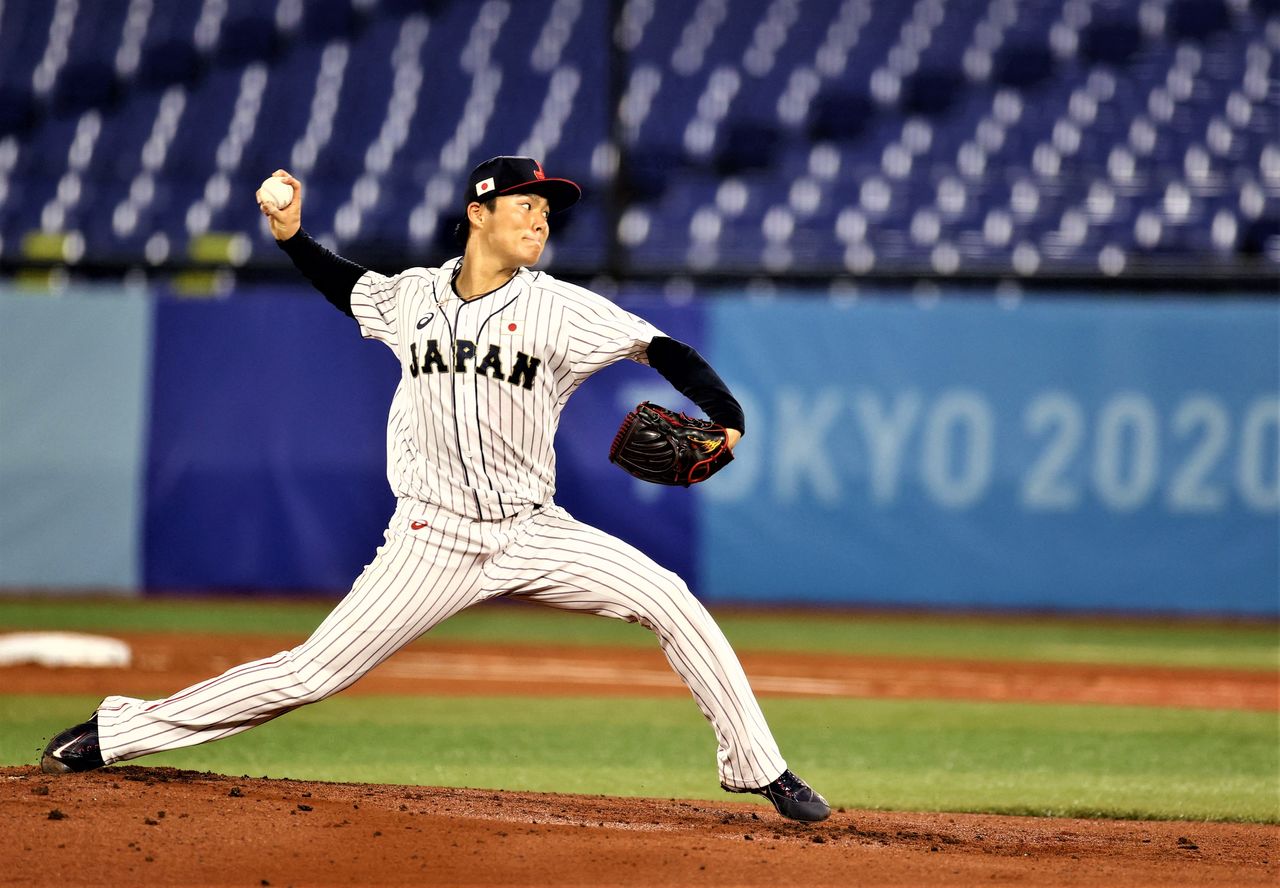
Last season Yamamoto Yoshinobu became the first Japanese professional baseballer to become a five-crown winner (adding shutouts and win percentage to the standard triple crown of wins, strikeouts, and earned run average) on two consecutive occasions. Taken in Yokohama during the August 4, 2021, Olympic semifinal game against South Korea. (© AFP/Jiji)
You Have to Score to Win
It might be a strong complement of pitchers that will form the foundation for WBC victory, but batters will also be essential if Japan is to reclaim the title of WBC champion. Even in the third and fourth tournaments, in 2013 and 2017, where Japan was eliminated in the semifinal round, the pitchers stuck to the initial game plan and fought to keep their opponent’s batters from getting ahead, resulting in some very close games. When you analyze why Japan lost, you see that it was the team’s inability to hit enough Major League–grade balls, leaving them with only a single run in both semifinal games. This is a problem that has plagued the Japanese national team.
In that sense, Ohtani, who bats at the highest level of the Major Leagues, is the team’s most noteworthy addition. When the team was announced at the end of January, there were fraught negotiations with Ohtani’s team, the Los Angeles Angels, on whether he would be used as a starting pitcher or as a reliever with limited pitches. However, Ohtani’s greatest promise as far as Kuriyama is concerned is actually his ability at the plate. Power alone will not be enough to beat the US team, which is captained by Ohtani’s Angels teammate Mike Trout and complemented by many other star players, or the Dominican Republic team, which includes mostly Major Leaguers. Rather, it is this lineup of Ohtani, who serves as the centerpiece of the batting lineup with his combination of power and speed, Murakami, who became Japan’s triple-crown winner last year after hitting 56 home runs to beat Oh Sadaharu’s record for a Japanese player of 55, and star player Yoshida, who achieved a .350 batting average at the Tokyo Olympics, that gives Samurai Japan power of an order never seen before.
This team is truly a dream team, though, and perhaps the true master stroke was the decision to include Major Leaguer Lars Nootbaar (Saint Louis Cardinals), the first ever Japanese-American to be selected by Samurai Japan.
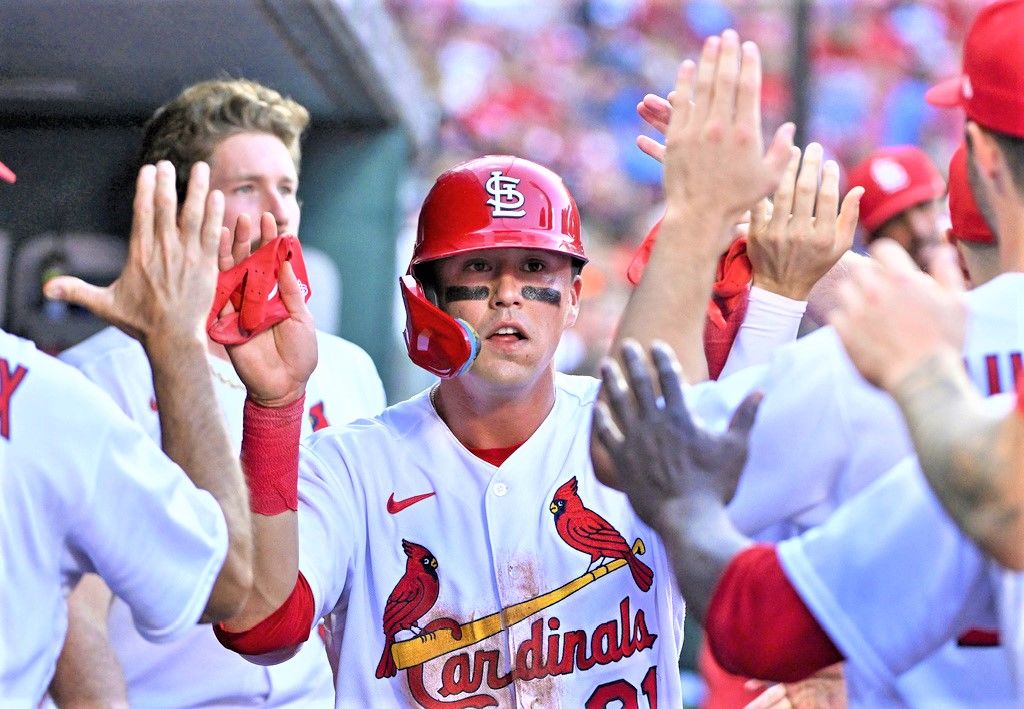
The selection of Nootbaar, a relative unknown in Japan, caused a media frenzy. Taken on August 17, 2022, in St. Louis. (© Kyōdō)
Raised by a Japanese mother and an American father, Nootbaar is strong-armed and a fast runner. For Samurai Japan, Nootbaar will take center field. Last year’s season was his second since being promoted to the Majors. y the second half of the season he had developed into the Cardinals’ top offensive threat, hitting 14 home runs over 104 games. While Nootbaar’s batting average for the season was a middling .228, he is a powerful player who achieved a career on-base percentage of .334, making him a promising candidate for first batter up, likely preceding Ohtani.
And thus, grounded by a formidable batting lineup, Samurai Japan has been transformed from the small-league baseball team of the past to a fast and powerful dream team with offensive capabilities. It is this squad that will vie to recapture the world title for the first time since 2009.
(The 2023 World Baseball Classic kicks off on March 8 and runs through the championship game, scheduled to take place in Miami, Florida, on March 21. For information on the members of the first-round pools and game schedules, see the World Baseball Classic page on the MLB website.—Ed.)
(Originally published in Japanese. Banner photo: The inclusion of Ohtani Shōhei, at left, on the Japanese national team delighted the country’s baseball fans. At right is team manager Kuriyama Hideki. Taken on January 6, 2023, in Tokyo. © AFP/Jiji.)